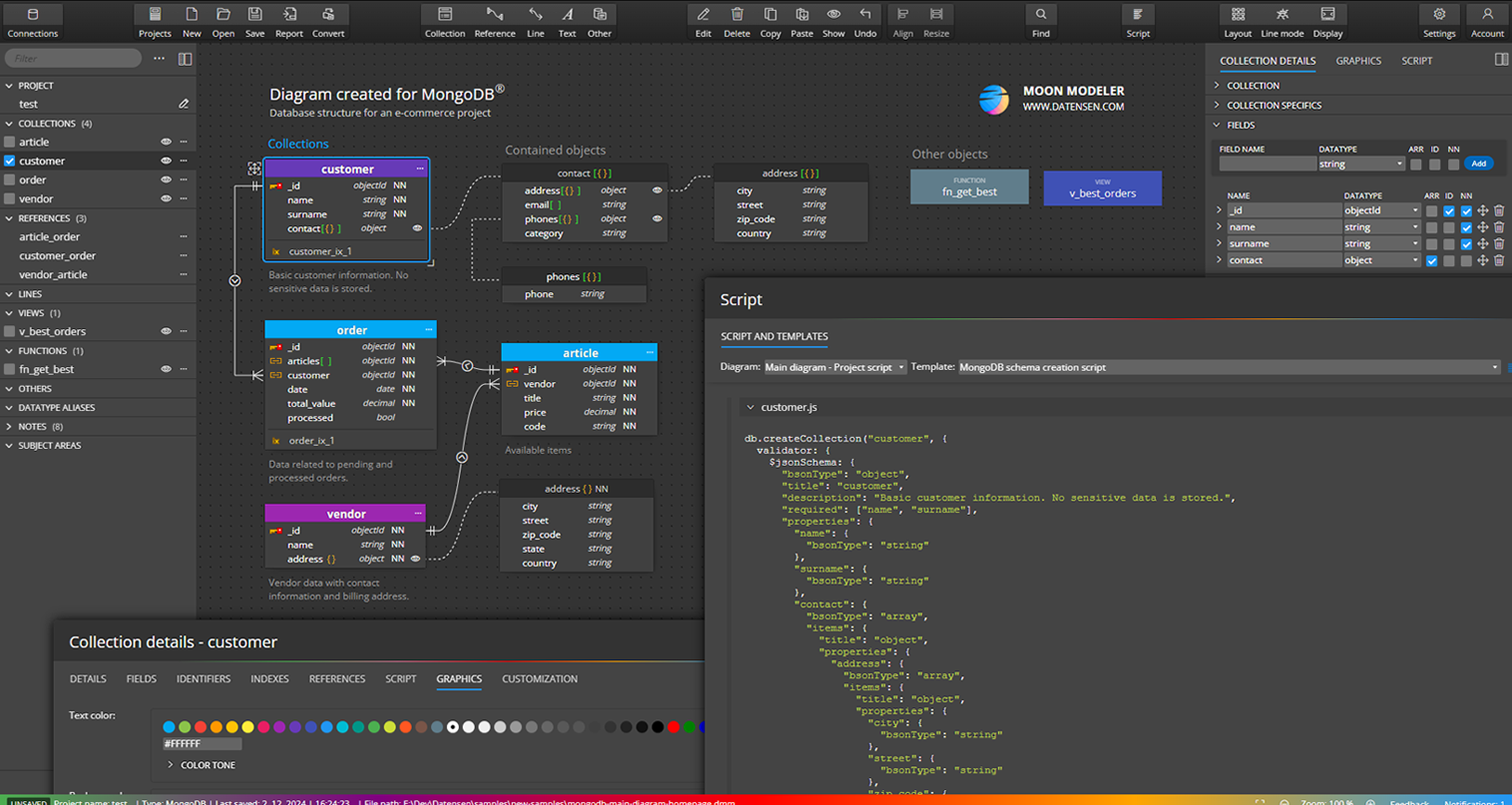
Here, we are going to create an Entity Data Model (EDM) for an existing database in database-first approach and understand the basic building blocks.Įntity Framework uses EDM for all the database-related operations. SELECT * FROM Deals WHERE provider = 'Apple' ĭeals. How about finding all deals from Apple, don't you know iPad and iPhone? We can write SQL queries like the following to get those deals : Let's see one more example of filtering collection in Java.


In Java 8 you can use a filter method like the below to do the same :ĭeals. SELECT * FROM Deals WHERE discountPercentage >= 30

How about getting all deals which with 30% or more discounts? We can write the following query in SQL : Our third example is about filtering elements based upon greater than condition.
#SAVE DATABASE OBJECT IN ICOLLECTIONS CODE#
SELECT * FROM Deals WHERE validity = 'MARCH'Īnd in Java 8, we can write the following code :ĭeals. Now we need all deals which are expiring in March. Now let's see the second example of a filtering List in Java. The forEach() method is a terminal operation and is used here to print all deals present in the filtered collection. In short, you can pass a lambda expression to the filter method until the result is boolean. It's actually an anonymous function test(), we have omitted type information for the deal variable because it will be inferred by JVM easily, making our code concise. In this example, we are passing a lambda expression to the filter method, which returns a boolean. SELECT * FROM Deals WHERE type = 'ELECTRONIC'Ĭan be written using Java 8 stream and filter method asĭeals. By using these Java 8 enhancements you can perform SQL like operations in Java-like: This is our sample program to demonstrate the power of the Java 8 Stream and Filter method. Leaving the implementation part of the platform.Īnd, If you are not familiar with Lambda Expression and Stream in Java then I suggest you check to Learn Java Functional Programming with Lambdas & Streams by Rang Rao Karnam on Udemy, which explains both Functional Programming and Java Stream fundamentals in good detail
#SAVE DATABASE OBJECT IN ICOLLECTIONS HOW TO#
The Java 8 Stream is a very efficient replacement of looping both design and performance-wise, because it separates What to do from how to do, just like SQL. For example, if you have a list of String and you want another list that contains only a long string say whose length is greater than 20 characters, you can use a filter method to do that and you don't need a loop. I agree a little bit counter-intuitive, select would have been better named for this method, but once you used it a couple of times, you will be Ok. Just remember that filter doesn't remove elements that match the condition given in the predicate, instead, it selects them in the output stream.

Java 8 uses this method to filter Collection. test(), which returns boolean true or false. Predicate is a functional interface with a couple of boolean-valued methods e.g. You first need to obtain a stream from Collection by calling stream() method and then you can use the filter() method, which takes a Predicate as the only argument. You can filter Java Collections like List, Set or Map in Java 8 by using the filter() method of the Stream class. Java 8 provides Streams, which not only makes it easy to run any operation parallel but also supports lazy loading and lazy evaluation, which means as soon as the filtering condition is satisfied, it stooped doing work, doesn't matter how many objects the collection contains. Though that approach work, it was very difficult to run them in parallel and take advantage of multiple CPUs available in modern-day servers. Prior to Java 8, the only better way to filter elements is by using a foreach loop or iterating over Collection using the Iterator and selecting the required object, leaving out rest. Java 8 provides excellent features to support the filtering of elements in Java Collections.


 0 kommentar(er)
0 kommentar(er)
